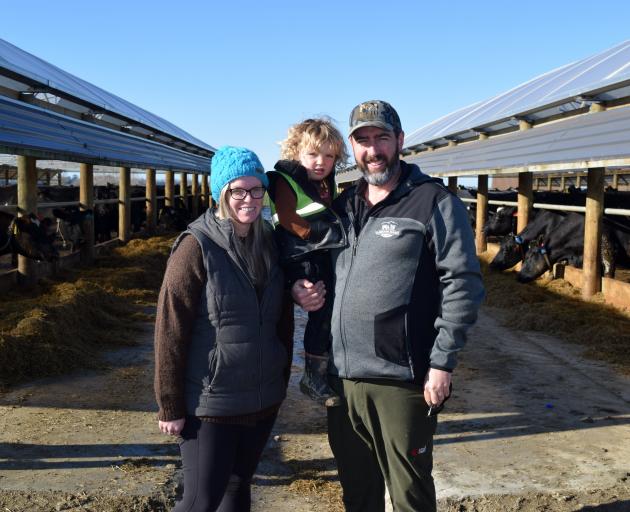
Michael and Kathryn Farmer began working on Fairbank Farms in Isla Bank after entering an equity partnership with Chris and Serra Stewart in 2022.
When they arrived, two Herd Homes were being built on the property.
"It was a stroke of luck and we’ve depreciated them on our balance sheet from day one," Mr Farmer said.

Mr Farmer was impressed with the durability of the plastic roofs, which he expected to last at least a decade.
About 220 cows were wintered off-farm by a grazier, about 320 cows were wintered in the shelters on silage and the rest were wintered on-farm on swedes.
The original consent issued for the Herd Homes, which have a combined interior area of 1500sq m allowed for 500 cows to be wintered.

The current consent allows the shelters to house 350 cows in May, 320 cows between June and August and 180 cows in September.
In May and September, the shelters were used for supplement feeding silage.
One of the shelters was used for calving in spring.

Rubber matting had been retrofitted in the shelters so none of the herd had to lie on concrete.
Calves born in a shelter "bounce up quickly" compared with those starting life on grass in adverse conditions.
"They’re not wet, they’re not cold, you can pick them up four or five times a day, easy as."
The shelters were used in the system to improve the body condition scores of cows.

A gravel area between the shelters was concreted this year, costing about $45,000.
Silage had been wasted by entering the gravel area.
Mr Farmer estimated improved feed utilisation would save the business about $17,000 a year.
"It has been a game-changer."

Consequently, they needed to produce their own silage and harvest it in early spring, to feed out in summer, which allowed them to maintain control if dry conditions bit, he said.
The interior of the shelters were big enough to drive vehicles in and pick up a calf or tow a trailer carrying palm kernel.
The shelters had allowed them to create a system where one person could feed out and one person could pick up calves and sort cows at the milking shed.
"It’s simple and easy."













